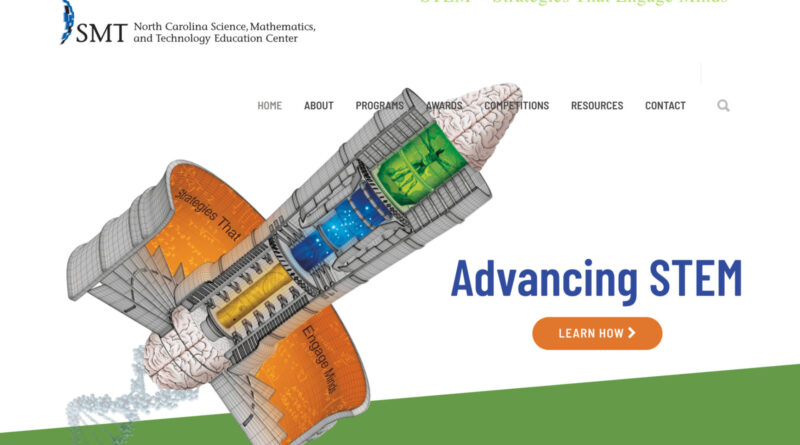Vision for STEM Education
The world is changing exponentially as technology shifts how we communicate, how we work, and how we go about our daily lives. The same should be true of how we learn. Vision for STEM Education.
That’s the basis of a new report from the North Carolina Science, Mathematics, Technology (SMT) Center, a nonprofit focused on advancing STEM-focused education in North Carolina. The report outlines a vision for schools’ evolution through 2035 and steps for progress along the way.
The Big Picture
Though North Carolina has made great progress in the last decade, it needs to expand on what’s working and address some baked-in barriers to the kind of learning that matches the moment, the report says. It recommends that the state:
- Re-invests in high-quality STEM education programs.
- Supports educators in using 21st century STEM instructional practices.
- Redesigns school operations to remove barriers to effective education.
- Deepens citizen and community support for 21st century STEM education.
Great work is already happening in our schools. Check out the video below for a small glimpse of that work.
Meeting Workforce Demand and Filling Representation Gaps
Moving the state’s STEM education forward matters if graduates are to be able to access the jobs of the future.
“The STEM disciplines prepare young North Carolinians to thrive in an age of computer automation, big data, energy capture and use, artificial intelligence, and quantum computing that will reshape society and the world of work,” the report reads.
The report draws on recent data from the Bureau of Labor Statistics and analysis from the Pew Research Center that show STEM jobs growing faster (at 8%) than all other occupations combined (3.7%) in the next seven years. Gaps in wages and positions exist: Black and Hispanic workers are underrepresented relative to their shares in the workforce overall.
The share of women is uneven across STEM jobs, with increases in life science and physical science jobs but not much growth in other areas.
STEM workers earn more than those in other jobs, but with uneven wages across race and gender. The highest median pay is for Asian men, and the lowest is for Black and Hispanic women.
There are particular types of STEM jobs that are predicted to drive that growth, with computer operations leading the pack.
A Shift in Instruction
And it’s not just what students learn that needs to change, it’s how they learn it.
“These challenging times also require a shift in STEM education away from teaching and learning focused on memorizing facts and performing oversimplified skills, and toward comprehensive education that enhances students’ critical thinking, historical knowledge, and ethical sensibilities,” the report states.
The report highlights project-based learning and problem-based learning as two promising instructional strategies that develop these skills:
Project-based: Through project-based learning, a well-established practice, students gain knowledge and skills by working for an extended period to investigate and respond to complex questions, problems, or challenges relevant to students’ experiences and communities. Students engage in the work with careful support and guidance from teachers. Students learn and practice such skills as calculating acceleration and writing persuasively within the context of a substantive six-to-eight weeks project.
Problem-based: Allows students to acquire knowledge and skills through a facilitated process of solving a complex problem for which there is no single correct answer. Typically the problems are more narrowly structured or shorter in duration than project-based topics.
Think Broader than Four Subjects
Though the center is focused on STEM (science, technology, engineering, and math), the report calls for a broader vision than four subjects or a sole focus on “hard” technical skills.
The center’s STEM vision “seeks to teach students with more engaging instructional strategies and to build students’ self-confidence as problem-solvers,” the report reads. “The center describes its two-pronged objective as teaching with ‘strategies that engage minds’ and teaching students ‘to know what to do, when they don’t know what to do.’”
High-quality STEM education incorporates humanities and the development of both hard skills and soft skills. It leads to economic empowerment and engaged citizenship.
“Debates over education often posit an either/or choice in defining primary goals: Job training versus academic learning; democratic citizenship versus economic efficiency; individual freedom versus social order,” the report says. “Yet, history demonstrates that societies thrive the more that people possess both high-level skills for economic empowerment and a shared understanding of the values and dynamics of citizenship.”
How Do We Get There?
We’ve got a ways to go to meet the report’s final long-term vision.
ALL NC K-12 students and their families experience a school system that recognizes and grows the innate skills and interests of every student. That prepares students to be independent, contributing members of their community—as they define it from bottom up, not top down.
There are systemic barriers, the report notes, that need to be addressed. But the report focuses on three big barriers to bringing high-quality STEM education to scale that are more tangible:
- High-stakes standardized tests that leave little room for advanced learning.
- Insufficient non-instructional time for teachers to plan, learn, and master new curriculum and instructional techniques.
- School schedules incompatible with project- and problem-based learning, experimentation, and design.
The report recommends the state create a North Carolina STEM Education Council. To be a “keeper of the vision,” to communicate with stakeholders. And to turn policy to practice. Create a leadership team to bring new models and ideas into play.
The report outlines the first year of the work. The second and third years. Years 4-6, years 7-10, and long-term goals for each of the four main strategies. Go to pages 52 and 53 of the report above for details.
Source: Vision for STEM Education
https://www.techedmagazine.com/category/news-by-industry/stem/

